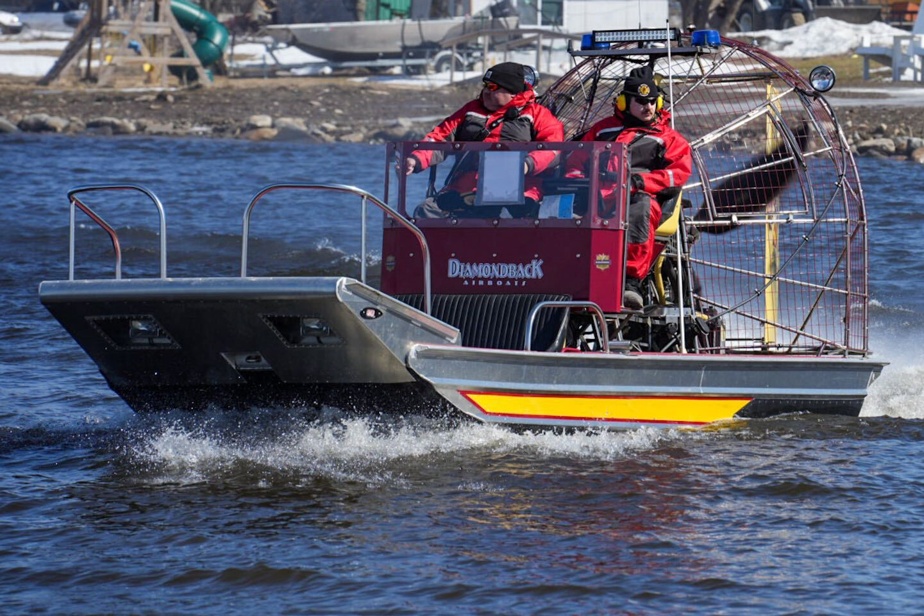(Akwesasne) “It’s heartbreaking,” Akwesasne resident Barbara Oakes Cook said Saturday as search continues on the St. Lawrence River in that community. This week, eight people, including two children, died trying to reach the United States by this sea route.
The search resumed at 7:30 a.m. in Akwesasne, in the area where a total of six adults and two children were found dead on Thursday and Friday, Shawn Dulude, chief of the Akwesasne Mohawk Police Service, told La Presse on Saturday. Morning. In the middle of the afternoon, several local police boats were still crisscrossing this sector where several islands divide the St. Lawrence River.
Police discovered the bodies of five adults and a child in a marshy area on Thursday, and recovered the bodies of a baby and an adult woman on Friday.
Both children were Canadian citizens, and the victims are believed to be of Romanian and Indian origin.
Akwesasne Mohawk Police are working with Immigration Canada and the United States Department of Homeland Security to confirm their identities, authorities confirmed in a statement.
The search is continuing with the assistance of divers from the Sûreté du Québec (SQ), said Mr. Dulude. Given the weather conditions involving rain in the morning, the SQ helicopter did not fly over the area on Saturday, he added. From the end of the morning, sun and winds were at the rendezvous in Akwesasne.
The search continues in particular to find Casey Oakes, a resident of Akwesasne who has been missing since Wednesday.
Mohawk police have made no direct connection between the deaths of the eight migrants and the disappearance of Mr. Oakes, who was last seen Wednesday evening on a boat found Thursday alongside the bodies of the migrants. The 30-year-old man is still wanted.
The community of Akwesasne is shocked, both by the bodies discovered and by the disappearance of Mr. Oakes, the target of general suspicion, several residents told La Presse.
“It’s really sad, heartbreaking and very difficult to absorb,” said Barbara Oakes Cook, met in the convenience store in Snye, the area of Akwesasne where the tragedy took place.
The community responded quickly, especially on Facebook, Ms Oakes Cook added. And according to her, the authorities must do more to stop human trafficking. “The police have to do their job, because this is not the first time that residents have seen people arrive like this, and they call the police who do not react,” she denounces, citing information circulating on social networks.
Another fear is that Akwesasne’s reputation will be tarnished by tragedy. “We’re going to be seen as the ones who killed these people, killed this baby. It’s awful, we’re really devastated,” she said.
Val Gray, owner of the Three Feathers internet cafe, also summed up the mood of the community saddened by the tragedy to The Canadian Press.
Mrs. Gray says she doesn’t know Casey Oakes. However, her father, a member of the community, is one of her clients.
The Mohawk council gave him the mission to feed all the volunteers who take part in the research. Ms. Gray said she served breakfast sandwiches for the past two days and dinner on Friday.
“The community supports each other. Each supports the other in one way or another, whether it’s the volunteers scouring the area or the companies donating to the volunteers. This is our community. No matter what, everyone is ready to help. »
A few volunteers gathered at the Akwesasne Volunteer Fire Station as police blocked access to the marina.
Akwesasne straddles the Canada-US border, with parts of the territory in Ontario, Quebec and New York State. The Quebec section is approximately 130 kilometers from Montreal.
According to the hypothesis of the authorities, the two families were trying to reach the United States through Mohawk territory.
Authorities say the territory’s unique geography makes it a popular place for smugglers, with police making 48 separate interceptions involving 80 people trying to enter the United States illegally since January.

